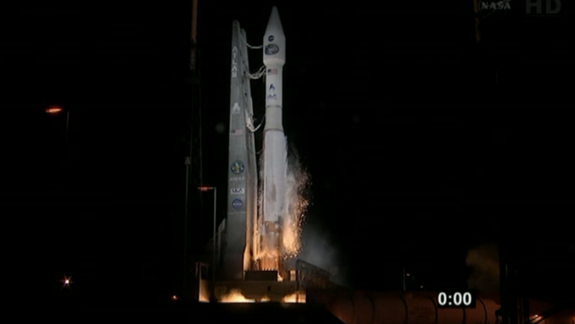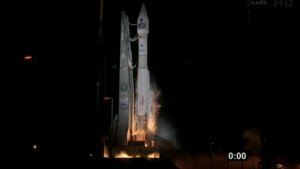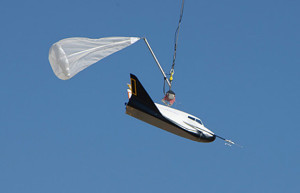
TRDS-K Launch Successful
The new NASA’s Tracking and Data Relay Satellite K (TRDS-K) was successfully launched on an Atlas 5 rocket from Cape Canaveral on January 30. The satellite will upgrade the space communication network, helping NASA and other agencies to maintain contact with orbiting spacecraft. TDRS-K will join five other satellites that currently form the space segment of the Tracking and Data Relay Satellite System. The spacecraft is supposed to operate in space for at least 15 years, although NASA officials expect it will outlive the planned mission lifetime.
Cosmonauts Test Laser Communications
The Russian Federal Space Agency (Roscosmos) announced on January 29 that Russian cosmonauts onboard the International Space Station (ISS) have used laser communication to beam scientific data from the station to Earth. A total of 400 megabytes was transferred in almost three seconds using the onboard laser terminal through the Earth’s atmosphere to Arkhyz ground station in Northern Caucasus. Data included Earth images and telemetric information. The experiment was conducted for the first time in international practice as part of the Laser Communication System project.
Lockheed to Support Dream Chaser
Lockheed Martin joined Sierra Nevada Corporation (SNC) to help with development and certification of the Dream Chaser commercial crew vehicle. Lockheed will act as exclusive partner, supporting SNC on a NASA certification products contract. Lockheed will also build the composite structure for the test vehicle at NASA’s Michoud Assembly Facility in New Orleans. SNC is one of three winning companies, along with Boeing and SpaceX, to receive funded Space Act Agreements from NASA on the Commercial Crew Integrated Capability initiative as announced on August 3, 2012. The three companies are developing commercial vehicles for transporting crews to and from low Earth orbit. In the next six or eight weeks, Dream Chaser will undergo the first drop test. The test vehicle will be released from a helicopter, allowing the lifting body to glide back to a runaway.



















































































































![A trajectory analysis that used a computational fluid dynamics approach to determine the likely position and velocity histories of the foam (Credits: NASA Ref [1] p61).](https://www.spacesafetymagazine.com/wp-content/uploads/2014/05/fluid-dynamics-trajectory-analysis-50x50.jpg)



Leave a Reply